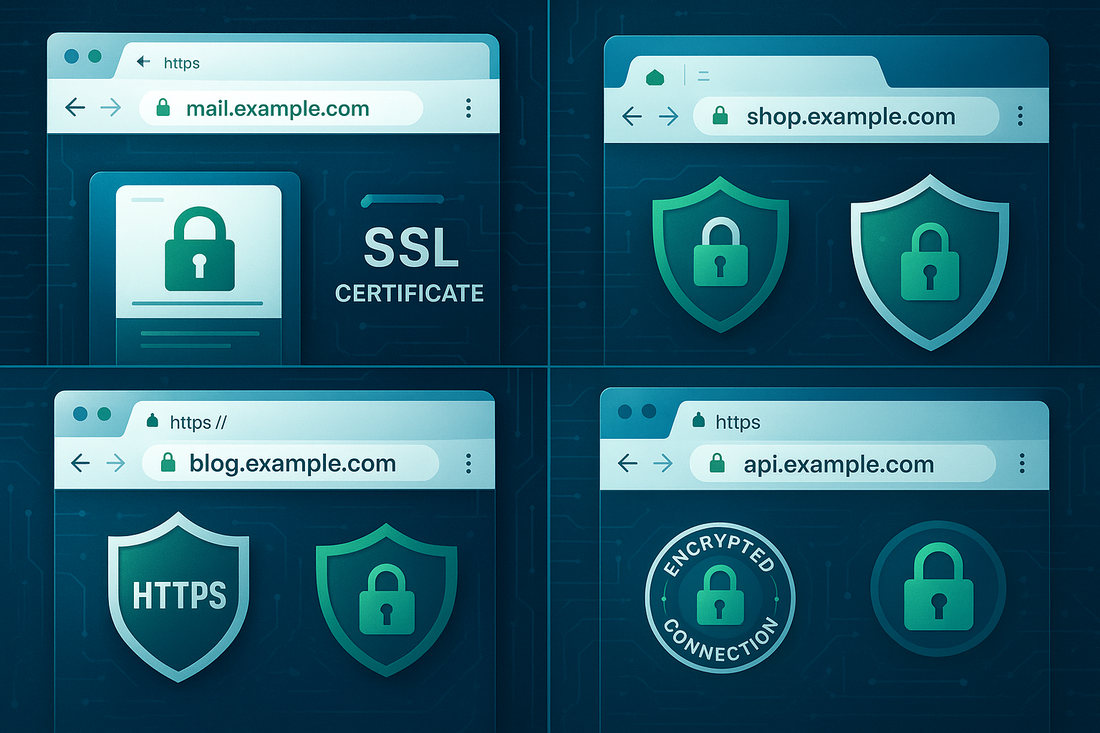
How Can I Add Subdomains To My Certificate?
Robert KimShare
Understanding how to add subdomains to your SSL Certificate is essential for comprehensive website security.
A subdomain SSL Certificate allows you to secure multiple subdomains under your main domain, providing encrypted connections for all your web properties through a single SSL Certificate solution.
Understanding Subdomain Coverage in SSL Certificates
SSL Certificates come in different types that offer varying levels of subdomain protection.
Multi-Domain SSL Certificates and Wildcard SSL Certificates are the two primary options for securing subdomains. Each type serves specific needs depending on your website infrastructure.
Wildcard SSL Certificates protect an unlimited number of subdomains at a single level using an asterisk notation (*.domain.com). This solution proves highly cost-effective for organizations managing numerous subdomains under one primary domain name.
Multi-Domain SSL Certificates, also known as Subject Alternative Name (SAN) SSL Certificates, allow you to secure specific subdomains by explicitly listing each one in the SSL Certificate. This option provides more granular control over which subdomains receive protection.
Adding Subdomains During Initial Certificate Setup
When initially ordering your SSL Certificate, you can specify the subdomains you wish to secure.
This process begins with creating a Certificate Signing Request (CSR) that includes all intended subdomains. The CSR must accurately reflect your domain structure to ensure proper SSL Certificate issuance.
For Wildcard SSL Certificates, the CSR should include the wildcard notation (*.domain.com) to cover all first-level subdomains. The Certificate Authority (CA) will verify your domain ownership and administrative rights before issuing the SSL Certificate.
With Multi-Domain SSL Certificates, each subdomain must be individually listed in the CSR. The verification process requires proving ownership for each specified subdomain, making the initial setup more involved but offering precise control.
Modifying Existing SSL Certificates
Most Certificate Authorities allow modifications to existing SSL Certificates through reissuance. This process enables you to add or remove subdomains without purchasing a new SSL Certificate, provided you stay within your SSL Certificate license limitations.
The reissuance process typically requires generating a new CSR with updated subdomain information. We will verify the new subdomains and issue a revised SSL Certificate while maintaining the original expiration date.
It is important to note that some SSL Certificate types have restrictions on modifications. Standard single-domain SSL Certificates cannot be upgraded to include subdomains without purchasing a new SSL Certificate with appropriate coverage.
Best Practices for Subdomain Security
When implementing subdomain SSL Certificates, maintaining proper security protocols is crucial. Regular audits of your subdomain structure help ensure all active subdomains remain protected under your SSL Certificate coverage.
Organizations should maintain accurate documentation of all protected subdomains and their respective SSL Certificate assignments. This practice simplifies SSL Certificate management and prevents security gaps during domain structure changes.
Implementing proper SSL Certificate monitoring tools helps track SSL Certificate expiration dates and subdomain coverage. These tools can alert administrators when SSL Certificates need renewal or when new subdomains require protection.
Technical Considerations and Implementation
Proper server configuration is essential when implementing subdomain SSL Certificates. Each web server type (Apache, Nginx, IIS) requires specific configuration steps to properly recognize and utilize the SSL Certificate for multiple subdomains.
SSL Certificate installation must include proper configuration of intermediate SSL Certificates to maintain the trust chain. This ensures browsers correctly validate the SSL Certificate across all protected subdomains without security warnings.
Regular testing of all secured subdomains helps verify proper SSL Certificate implementation and identifies potential configuration issues before they impact users.
Tools like SSL Certificate scanning utilities can verify correct SSL Certificate installation across all protected subdomains.



